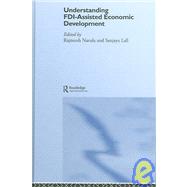- ISBN: 9780415348164 | 0415348161
- Cover: Hardcover
- Copyright: 12/16/2005
It is well accepted now that economic growth and development are highly dependent on improving not just the availability of capital, but also the technological capabilities, infrastructure and resources available to (and internalized by) firms, individuals and institutions in any country. Over the last two decades or so, there has been a significant shift away from a inward-looking, import-substituting approach towards a more outward-looking, export-oriented policy orientation. The reasons for this shift are complex, but have to do with developments associated with globalization, trade and debt deficits faced by IS-driven economies, as well as the acknowledged success of the Asian newly industrialized economies (NIEs) in technological and economic 'leapfrogging' within an outward-oriented approach. One of the key features of policy liberalization is the need to attract foreign direct investment (FDI) as a means to acquire or improve technological capabilities through multinational enterprise (MNE)activity. The role of the MNE as an additional source of capital and technology is one of the key features of this new openness, as alternative sources of capital have become scarcer, exacerbated by economic and financial crises. The failure of protected industries in LDCs to become competitive on global markets has highlighted the limitations of the arms-length technology transfer approach. At the same time, the need to build strong local capabilities has not diminished; on the contrary, it has risen as increasingly mobile factors seek strong complementary factors in sites where they will locate. Hence, in recent years, both LDC governments and foreign donors have increasingly come to focus on the role MNEs and FDI can play in development. This has been accompanied by a lifting of many types of regulations that previously limited the role of FDI and MNEs in many developing countries, and a reassessment among donors of the role of public versus private actors in development aid. However,although liberalization has affected the demand for FDI, it has not necessarily always resulted in an increase of FDI inflows. On the other hand, MNEs have an increasingly wide selection of locations available to them, and relatively speaking, the supply of FDI has not increased proportionally with demand. Furthermore, declining trade barriers and restrictions on trade allow MNEs to supply markets without engaging in local production. A large share of FDI continues to be directed to a relatively small group of countries. In the process of embracing FDI as a solution to the myriad of economic ills there is a lack of understanding of the need to develop the necessary domestic capacity to attract, and absorb the spillovers and externalities that derive from, FDI. The importance of foreign investment is now taken as given and little attempt is made to understand the rationale and the costs associated with this policy stance. Simply put, FDI is not a condition sine qua non for development. Too much emphasishas been placed on attracting FDI, and not on understanding how to optimize the benefits for the host economy. This volume aims to encourage and promote research related to these issues. This volume was previously published as a special issue of the European Journal of Development Research.







